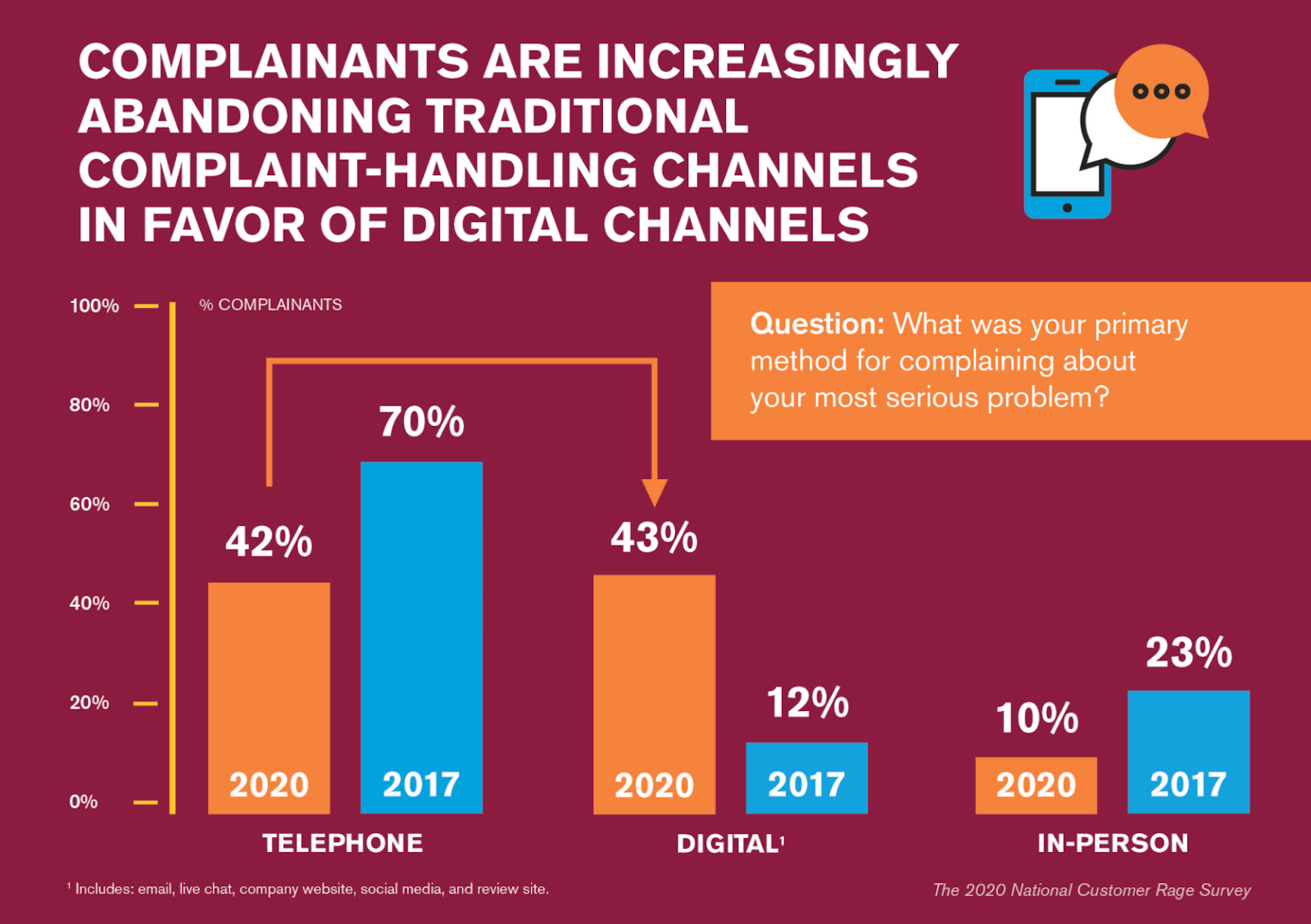
How an Omnichannel Customer Experience Benefits Customers and Business
According to PWC, the number of companies investing in their omnichannel customer experience jumped by more than 300% from 2010 and 2020.
Five years ago when someone mentioned omnichannel, it could’ve been brushed off as a buzzword. Companies knew it was taking the customer service world by storm, but as with any trend, it was hard to predict if it’d be fleeting or if it’d stick around.
But now we know: the omnichannel customer experience isn’t going anywhere.
Research shows, customers with the strongest omnichannel strategies boast higher revenue, better customer engagement, and improved customer retention.
And since we were all forced to use digital channels while social distancing in 2020, creating an easy omnichannel customer experience is on the radar of all the top business leaders.
A well-crafted omnichannel customer experience removes channels from the picture and lets you and your team focus on solving problems. It lets your agents think like your customers – focusing on why they reached out, not how.
The result? Low-effort experiences that breed customer loyalty. Here are three reasons why an omnichannel customer experience benefits business (and how the right tools help).
1. Customers don’t have to repeat their issues over and over (And over.)
Picture this: your customer, Dave, has been trying to reach your team for a little over a week now. Dave emailed your team last week to talk about a problem. After no response for a few days, he picks up the phone and calls your team. Your agent, Andrew, picks up the call. Andrew doesn’t handle email interactions, and he can’t see what’s happened previously in your service team’s inbox.
Plus, Andrew has no customer history to help him solve Dave’s problem. Now, Dave has to repeat the issue he already detailed in his email. He gets frustrated. And the heat coming through the phone flusters Andrew, only heightening Dave’s frustration.
Some 76% of customers say repeating their issue over and over again when communicating through different channels is the most frustrating piece of their entire customer experience. And, another 46% of customers say they’ll abandon a brand when their employees aren’t knowledgeable.
With omnichannel, you untangle Dave’s web of frustrations. When he sends an email, it routes to an agent’s queue, so the right agent can respond the first time around. And if the agent can’t solve the problem via email, the same agent can transfer the interaction to a phone call to talk through it. All with the click of a button.
Not only that, but the best omnichannel tools will serve up customer history on your agents’ screen, too. Instead of forcing agents to dig through a system for chat, another for email and still another for call history, they have the details they need right in their contact center platform. They can diagnose and treat your customer’s problem, switching channels when needed, without interrupting the conversation. That’s the kind of customer service that builds loyalty and improves CSAT scores.
Watch omnichannel in action:
2. You empower your agents to better help customers.
Your best agents crave helping customers from the second they plop down in their chairs and pop their headsets on. Turns out, the number one factor impacting an agent’s experience at work is the empowerment they feel to offer customers unique resolutions.
A real omnichannel customer experience gives agents the tools they need to problem-solve instantly. It empowers them to help more customers by giving them info and customer data to do so efficiently and effectively.
Imagine trying to solve a problem with no context, in a matter of minutes. And if you don’t, you risk jeopardizing your customer’s entire experience.
That’s a lot of pressure.
With an omnichannel strategy, you eliminate that source of stress for your agents.
[Read Next] What to do when your multichannel experience comes at the expense of agents
Agents who have a holistic view of customer interactions can resolve problems faster and more effectively. Agents improve first contact resolution when they have access to customer history and the data they need to solve problems. And, for every 1% in bump in FCR you see, you get a 1% bump in CSAT, too.
An omnichannel customer experience benefits your agents by giving them insight to draw conclusions for customers. It even nudges them to find patterns and deliver proactive customer service, too.
Here’s how omnichannel helps agents in practice:
Let’s say Andrew takes Dave’s call and looks at his past interactions. He realizes Dave’s problem is incredibly similar to one Sarah had last week. After Sarah called the first time, he saw she had to follow up several times to close the case.
Andrew can now anticipate that Dave is likely to have similar issues, so he takes a few extra moments to train Dave and eliminate future calls – a big win for Dave (and for Andrew). Not to mention, wins for your agents and customers are wins for agent attrition, customer retention rates, and a host of other call center metrics, too.
Giving agents omnichannel tools reduces anxiety and heightens empowerment. When your team has the tools to succeed, they don’t scramble looking for crucial information. And according to our friend John Goodman from CCMC, simply empowering the front line and giving them tools can reduce customer attrition by 50%.
[Listen Now] Hear John’s full episode over here
3. You beat competitors on the customer experience battleground.
Research out of Adobe found companies that have the strongest omnichannel customer engagement strategies see 10% growth year-over-year. Plus, they increase order value by another 10% and improve close rates by 25%.
Prioritizing omnichannel gives you a leg-up on the rest of your CX competitors who still try to compete with siloed channels and systems.
These days, most companies offer multiple channels and have different ways for customers to reach out. Why? Because that’s what your customers want. In 2020, the number of customers reaching out for help with a problem shifted to digital. Rather than calling in, customers started using social media and other digital channels to air their grievances and share their problems with a company.

However, some 50% of companies still suffer from siloed data and piecemealed systems. Just because a company offers tons of channels doesn’t mean they have the strategy and tools in place to deliver a seamless omnichannel experience.
Multichannel isn’t omnichannel.
When you adopt a real omnichannel strategy (and the right omnichannel tools), your channels work together for your agents and your customers.
If agents struggle to monitor tons of different, disconnected channels, they’re not empowered to deliver efficient and effective service. And, your positive customer service experience times out.
Modern omnichannel eliminates effort for you, your agents, and your customers. It lets you set thresholds, trigger, and serve up coaching and in-line training in your agents’ queues. It connects every channel for seamless customer conversations. And, it uses customer data to inform every interaction.
An omnichannel customer experience is both agent-centric and customer-centric. It eliminates pain and ditches inconsistencies at every touchpoint, for every individual involved.
[Learn More] Sharpen’s omnichannel is a one-stop-shop for a better customer experience.
We originally published this post on July 30, 2018, and we updated it on December 19, 2019 and July 1, 2021.


